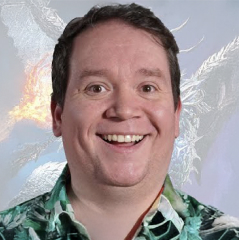Deck & Commander Strategies

Terra, Herald of Hope
Utilizes a value and reanimation strategy by milling cards and returning small creatures from the graveyard to the battlefield, creating a resilient board presence.

Y'shtola, Night's Blessed
Focuses on casting non-creature spells with converted mana cost three or greater to draw cards and drain opponents’ life totals, controlling the game through spellcraft.

Cloud, Ex-SOLDIER
Aggressively equips creatures with powerful artifacts to create high damage threats quickly, aiming to overpower opponents with enhanced creatures.

Tidus, Yuna's Guardian
Leverages counters and proliferate mechanics to draw cards and gain incremental advantage; benefits when creatures with counters deal combat damage to players.
Gameplay Insights
- 1
Terra’s ability to mill cards and reanimate creatures each combat phase created a steady value engine that kept her board state replenished and difficult to remove completely.
- 2
Cloud’s use of Wrecking Ball Arm transformed her commander into a formidable attacker with a base 7/7 and evasion from creatures with power 2 or less, enabling effective pressure and potential quick kills.
- 3
Y'shtola’s emphasis on non-creature spells with high mana costs allowed for substantial card draw and life drain, applying indirect pressure while maintaining board control.
- 4
Tidus’ deck faced a limitation due to its triggered ability only activating once per turn, requiring careful timing to maximize card draw and proliferate effects.
- 5
The interaction between equipment upgrades and commander abilities was a key dynamic, particularly how Cloud's equipment changed combat calculus and forced opponents to adapt defenses.
- 6
Mana base management using dual lands and ramp spells like Nature's Lore was critical in enabling timely casting of commanders and powerful spells.
Notable Cards
-

Terra, Herald of Hope
-

Y'shtola, Night's Blessed
-

Cloud, Ex-SOLDIER
-

Tidus, Yuna's Guardian
-

Wrecking Ball Arm
-

Nature's Lore
-

Darkwater Catacombs
-

Radiant Grove
Gameplay Summary
The game featured four Final Fantasy-themed Commander decks battling for dominance, each with distinct strategies reflective of their commanders' themes.
Terra, Herald of Hope, utilized a reanimation and value-based approach, leveraging her ability to mill cards and return small creatures from the graveyard to the battlefield.
This created a steady stream of board presence and resilience.
Y'shtola, Night's Blessed, focused on controlling the board and drawing cards through spells with higher converted mana costs, aiming to drain opponents' life totals while maintaining card advantage.
Cloud, Ex-SOLDIER, played an aggressive equipment-centered strategy, enhancing creatures with powerful artifacts like Wrecking Ball Arm to pressure opponents with high damage output.
Tidus, Yuna's Guardian, operated a counters and proliferate theme, benefiting from creatures dealing damage with counters and drawing cards to maintain momentum despite a limitation on how often its triggered ability could be used per turn. Early turns set the stage with mana development and establishing key pieces.
Terra's player successfully cast her commander, enabling the milling and reanimation engine, while Cloud's player ramped into potent equipment that could turn any creature into a formidable threat.
Y'shtola's deck began to capitalize on casting non-creature spells to chip away at opponents, and Tidus' deck prepared to move counters and leverage proliferate for card draw.
A pivotal moment was the introduction of Wrecking Ball Arm, which dramatically increased Cloud's offensive potential by granting a 7/7 base power and toughness and selective evasion.
Throughout the game, Terra’s reanimation ability kept her board replenished, while Y'shtola's spellcraft and life drain pressured the group.
The interplay of these strategies created dynamic tension as each player sought to maximize their commander’s unique abilities to gain control and push toward victory.

























